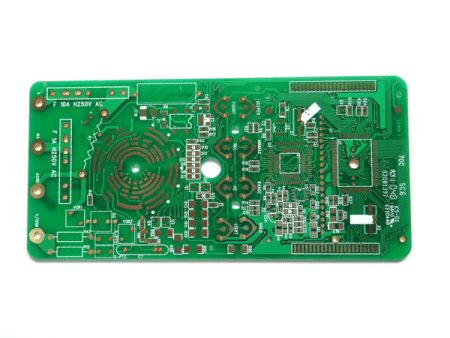- +86-755-23012705
- Building 3, Jinfeng Industrial Park, Fuyong Street, Baoan District, Shenzhen ,China
- [email protected]
1. Open the PCB design drawing on the computer, light up the short-circuited network, and see where is the closest, the easiest to connect to. Pay special attention to the short circuit inside the IC.
2. If it is manual welding, develop a good habit:
(1) Before soldering, check the PCB board visually, and use a multimeter to check whether the key circuits (especially the power supply and the ground) are short-circuited.
(2) Every time a chip is soldered, use a multimeter to check whether the power supply and the ground are short-circuited.
(3) Don’t throw the soldering iron randomly when soldering. If you throw the solder onto the solder feet of the chip (especially surface mount components), it will not be easy to find.

3. When you find a short circuit. Take a board to cut the line (especially suitable for single/double-layer boards). After the line is cut, each part of the functional block is energized and eliminated step by step.
4. Use short-circuit location analysis instruments, such as Singapore PROTEQ CB2000 short circuit tracker, Hong Kong Lingzhi Technology QT50 Short Circuit Tracker, British POLAR ToneOhm950 multi-layer circuit short circuit detector.
5. If there is a BGA chip, since all the solder joints are covered by the chip and cannot be seen, and it is a multi-layer board (above 4 layers), it is best to separate the power supply of each chip during the design, using magnetic beads or 0 ohms resistor connection. Then when there is a short circuit between the power supply and the ground, the magnetic bead detection is disconnected, and it is easy to locate a certain chip. Because the welding of BGA is very difficult, if it is not automatically welded by the machine, it will easily short-circuit the adjacent power supply and the ground two solder balls.
6. Be careful when welding small-size surface-mount capacitors, especially power supply filter capacitors (103 or 104), which can easily cause a short circuit between the power supply and the ground. Of course, sometimes with bad luck, the capacitor itself is short-circuited, so the best way is to test the capacitor before welding.






XPCB Limited is a premium PCB & PCBA manufacturer based in China.
We specialize in multilayer flexible circuits, rigid-flex PCB, HDI PCB, and Rogers PCB.
Quick-turn PCB prototyping is our specialty. Demanding project is our advantage.
Tel : +86-136-3163-3671
Fax : +86-755-2301 2705
Email : [email protected]
© 2024 - XPCB Limited All Right Reserve
